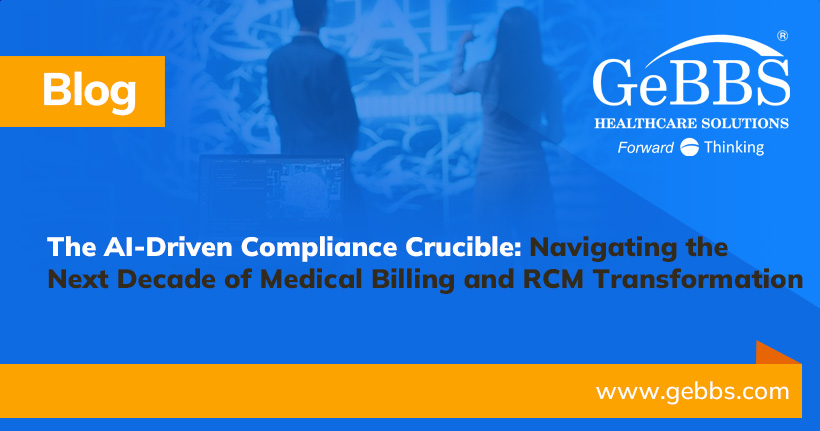Good preparation for the “so-called” transition to ICD-10 coding can actually optimize your reimbursements; it is going to take some effort, but it can pay off in terms of higher practice revenue, less paperwork and greater overall clinical efficiency. Preparation is the key, but it will provide an excellent ROI!
The term transition does not really apply to what is going to happen on October 1, 2014. It will not be a gradual, step-by-step movement to the new coding system; it will be a complete and immediate hard cut-over when that date rolls around.
The Centers for Medicare & Medicaid Services (CMS) continues to warn healthcare providers that preparation and training are necessary, but according to their research, they find little evidence that is happening.
How did we get to where we are today?
The attempt to classify diseases goes back to the late19th century. However, using those classifications, as the basis to determine reimbursement levels, did not come into play until the Federal government became a major payer in the healthcare industry. The 10th revision of this classification system covers more than 14,400 distinct codes, and the ICD-10-PCS contains more than 76,000. Some of the new codes are ludicrously specific, such as injuries sustained by a collision with a sea lion and its associated complications.
Education on how ICD-10 codes fundamentally differ from the current system will be critical. For example, ICD-10 procedure codes have seven positions, expanded from five positions in the ICD-9-CM code set. Example: XXX.XXXX = 7 character possible code. All codes must be at least 3 digits and a decimal point separates the 3rd and 4th characters. The placeholder x is employed for codes using the 7th character, but not the 5th or 6th characters, x can be used to mark the character’s place in the code without giving it a value. Here’s an example: T75.4xxA = electrocution, shock from electric current, shock from electroshock gun (taser), initial encounter. The 7th character defines encounter: initial encounter, subsequent encounter, sequela.
Because ICD-10 codes are so different from ICD-9-CM codes, and not just an expansion of that system, it is important for healthcare providers who must use them to develop a working familiarity with the new code set.
Every healthcare provider should have their coding staff examine their current top 10 ICD-9-CM codes, along with their current documentation. Verify, with hand-on practice, that your coders can readily convert ICD-9 codes to the new ICD-10 system based on their current documentation. If they can’t, identify which critical pieces of information are missing in the your current documentation? Making these documentation improvements – now – will minimize the potential revenue impact on October 1, 2014.
Even if your facility has an excellent coding staff and a great billing department, the chances are pretty good that your coding productivity and your revenue stream are going to “take a hit.”
Several suggestions have been put forward on to deal with this cash flow impact. The HIMSS ICD-10 PlayBook, a blueprint for provider and payers’ ICD-10 implementation, recommends that providers have a minimum of six months of cash reserves to mitigate revenue impacts during the ICD-10 transition period; how healthcare providers have this kind of cash on hand?
How much emergency cash should your organization have in reserve to manage the ICD-10 disruptions to payments during the transition? Since your expenses and cash outlays will remain the same, and may even increase during the transition, some industry experts are suggesting you have some amount of cash reserves, or at least, access to cash through loans or lines of credit to avoid potential problems.
To meet these revenue disruption challenges, healthcare providers should also be considering the use of new technology. Technology is available today in the form of computer-assisted coding (CAC) tools. CAC is a leading-edge technology that automatically derives and assigns medical codes from within clinical documentation. Many are presently ICD-10-ready.
With this kind of technology, your organizations can “hit the ground running” and streamline your revenue cycle processes, while becoming increasingly more compliant with the requirements of payer and quality reporting. Many CAC technology vendors offer on-site coding expertise to ensure there is no lag in your coding workload. These technology solutions can work with your electronic health record (EHR) and financial systems to produce extremely accurate coding.
Adequate preparation and training are crucial to minimizing your financial impact. If you have yet to develop an implementation plan, there is still time, but you should act now.
The first step is to assess your vulnerability. In order to understand how ICD-10 will impact your organization, enterprise-wide, you should plan to conduct a readiness review that includes a gap assessment and analysis. A gap assessment will help you gain an understanding of where and how ICD-10 will impact your organization.
The assessment should include your people and their present expertise, your business processes and your legacy technologies to determine the enterprise-wide impact of ICD-10. Any aspect of your organization impacted by the transition to ICD-10 should be carefully examined, including the programs and systems you are presently using for claims processing, analytics, fraud detection, enrollment, eligibility and benefits verification. This gap assessment will let you know where you need to make proactive critical process changes before the deadline falls and your revenue is impacted.
Take advantage of every educational opportunity. Specialty associations, such as AHIMA, AMA, MGMA, HIMSS and several billing associations will be offering training programs and informational webinars. Monitor these webinar topics and ensure your staff members attend the appropriate ones. Every organization is going to need some kind of training. The learning curve is going to be tremendous. Targeted, e-learning programs that your staff members can access any time and any place they have Internet availability will least impact their daily productivity.
The Switch to ICD-10 does not have to be all gloom and doom. With good preparation you should be able to actually improve your reimbursements, but it’s going to take some effort. These proactive efforts will pay off in terms of higher practice revenue, less paperwork and greater overall clinical efficiency. Preparation is the key, but it will provide an excellent ROI — instead of dooms day!






